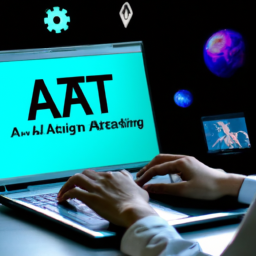In the bustling world of artificial intelligence, you might be familiar with ChatGPT, but have you explored other AI tools that are forged similar to it? Imagine unearthing other AI tools with capabilities that quite match, or even surpass, the functionalities of your favorite ChatGPT. This article takes on a fascinating journey through the realm of AI and brings to light some astonishing tools that compare to ChatGPT in their fascinating features and functions!
Understanding AI Tools
As a tech enthusiast, you’ve likely heard of AI tools. They’re an exciting part of modern technology with far-reaching implications for our future.
What are AI Tools?
AI Tools are the technological developments and software applications powered by artificial intelligence (AI). These tools harness the power of AI in performing tasks – such as image recognition, natural language processing, predictive analytics, and automation – that traditionally required human intelligence.
The Role of AI Tools in Automation and Efficiency
AI tools are at the forefront of automation, reshaping how businesses operate and how people interact with technology. From automating repetitive tasks to enhancing efficiency in data analytics, AI tools make things faster, cheaper, and more accurate. They’re the invisible helping hand ushering us into a more streamlined future.
Introduction to ChatGPT
ChatGPT is one of the AI tools that has captured massive attention and piqued tremendous interest.
What is ChatGPT?
ChatGPT is AI software designed by OpenAI. Using a transformer architecture and a language model called GPT-3, it generates human-like text responses. It’s essentially your smarter artificial conversational partner.
How Does ChatGPT Work?
ChatGPT operates based on Machine Learning. It’s trained on a dataset comprising the internet’s text. The AI tool does not know specifics about which documents were part of its training set and generates responses based on patterns it learned during its training.
Applications of ChatGPT
ChatGPT is highly versatile. It’s been used to draft emails, write code, create written content, answer questions, and even tutor in a variety of subjects. In essence, wherever there’s a need for human-like text generation, ChatGPT can lend a hand.
Exploring Alternative AI Tools
As remarkable as ChatGPT is, it’s not alone in the world of AI tools. Let’s delve into some of the other impressive AI tools that exist.
Overview of Other AI Tools
From IBM’s Watson to Amazon’s Lex, the AI world teems with innovative and powerful tools. Each tool has its uniqueness and specialties, designed to perform specific functions and solve peculiar problems.
Comparison of Different AI Tools
Comparing AI tools is not always straightforward, given the different functionalities and use-cases they cater to. However, you can compare them based on specific features, performance measures, strengths, weaknesses, and the use cases they’re best suited for.
AI Tool 1: GPT-3
GPT-3 is another product of OpenAI and one of the most powerful language processing AI tools available.
Overview of GPT-3
GPT-3, which stands for Generative Pretrained Transformer 3, is a state-of-the-art, autoregressive language model. It utilizes deep learning to produce text that is nearly indistinguishable from human-written text.
Features and Capabilities of GPT-3
With 175 billion machine learning parameters, GPT-3 stands out with its capacity to understand context and generate appropriate responses. Despite its potential, it requires a careful approach because of its ability to produce harmful, biased, or false content.
Use Cases for GPT-3
GPT-3 has wide-reaching implications across multiple sectors. It assists content creation, programming, customer service, language translation, and even game development.
AI Tool 2: OpenAI Codex
OpenAI Codex bridges the gap between the coding world and natural language processing.
Understanding OpenAI Codex
OpenAI Codex is a descendant of GPT-3 tailored towards understanding and writing code. It can translate commands given in natural language to code in various programming languages.
Unique Features and Applications of OpenAI Codex
OpenAI Codex can interpret a wide array of programming tasks. Whether it’s writing a function or fixing a bug, Codex makes programming more accessible to the layman and more efficient for the professional.
AI Tool 3: Microsoft’s DialoGPT
Microsoft has also made its footprint in this space with DialoGPT.
Introduction to Microsoft’s DialoGPT
Microsoft’s DialoGPT is a large-scale, conversational AI model developed with the aim of making machine-human conversations more interactive and engaging.
Key Features and Benefits of DialogGPT
DialogGPT offers highly coherent and context-aware conversations. It’s designed to engage humans effectively and could revolutionize customer service, entertainment, and even personal assistance.
AI Tool 4: IBM Watson Assistant
IBM Watson Assistant brings the AI capabilities of IBM’s Watson to a chat interface.
Overview of IBM Watson Assistant
IBM Watson Assistant is an AI tool designed for businesses to develop conversational interfaces. These interfaces can work without human intervention and are capable of learning over time.
Applications and Industry Use Cases for Watson Assistant
IBM Watson Assistant is a versatile tool, useful in customer service, internal processes, and IoT applications. From automating routine queries to performing complex tasks, Watson Assistant reshapes businesses process.
AI Tool 5: Facebook’s BlenderBot
Facebook has made significant strides in the chatbot sphere with its BlenderBot.
Understanding Facebook’s BlenderBot
Facebook’s BlenderBot is a formidable AI conversational model. Touted as the largest open-domain chatbot, it was developed to generate more engaging, interactive, and human-like conversations.
Features and Advantages of BlenderBot
BlenderBot brings together empathy, knowledge, and personality in chatbot conversations. Its ability to provide a long-term memory gives it the advantage of maintaining a more meaningful and engaging conversation.
AI Tool 6: Amazon Lex
Amazon brings scalable chatbot solutions to businesses through Amazon Lex.
Introduction to Amazon Lex
Amazon Lex is an AI service for building conversational interfaces. It’s the same technology that powers Amazon’s Alexa.
Use Cases and Integration with Amazon Web Services
Amazon Lex has seen wide-ranging applications, from building chatbots for customer service to IoT applications. Plus, its seamless integration with the wider AWS ecosystem makes it a go-to for those already embedded in AWS services.
AI Tool 8: Botpress
Botpress offers a unique, open-source spin on the chatbot landscape.
Understanding Botpress
Botpress is an open-source chatbot framework. It enables organizations to create and manage chatbots more effectively using familiar development tools.
Features and Advantages of Botpress in AI Chatbot Development
Botpress offers robust functionality while providing the freedom and flexibility of open-source development. Its visual workflow, built-in natural language processing (NLP), and extensibility give it a unique edge in the development of AI chatbots.
So, AI tools are as diverse as they are fascinating. ChatGPT, GPT-3, IBM Watson, Facebook’s BlenderBot, among others, offer varying approaches to language understanding and generation. It’s amazing to see how these AI tools mimic human conversation and thought, all thanks to some smart algorithms and tons of data. These AI tools are not just reshaping our present, but they’re also setting pace for a future where technology and daily life intertwine seamlessly.



